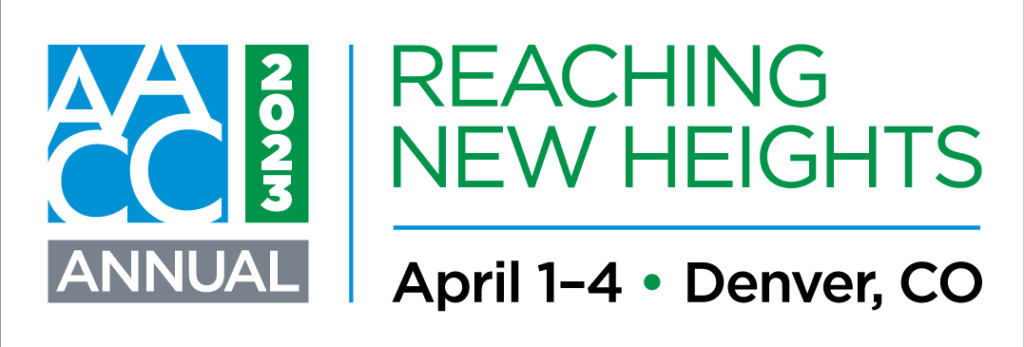DENVER — State directors of community colleges covered a lot of ground at their spring meeting on Saturday, from dual-enrollment trends to hiring challenges, as well as updates on restarting Pell for incarcerated individuals and proposed reporting guidelines from the U.S. Education Department regarding third-party servicers that would have huge implications for two-year colleges.

Almost every industry is struggling to find workers these days, including community colleges, reported members of the National Council of State Directors of Community Colleges, an affiliate of the American Association of Community Colleges (AACC). At a time when employers are desperate to find qualified workers and turning to community colleges to help with training, community colleges are having a tough time finding those instructors. That’s partly due to potential trainers opting to work at better-paying industry jobs instead of typically lower-paying teaching gigs.
In Louisiana, for example, community colleges are running successful commercial driver’s license programs — their production is four times what it was last year, said Susie Schowen, vice president of education at the Louisiana Community and Technical College System. But it’s tough finding trainers.
“We’re chasing down every retiree we can possibly get our hands on,” she said, though there is some flexibility in the state funding model that can allow colleges to boost some pay for certain program areas.
Colleges are facing hiring challenges in other areas, too, not just in workforce development programs. One Colorado college saw a 30% change over one year among its staff and faculty, said Joe Garcia, chancellor of the Colorado Community College System, noting it’s hard to compete on compensation with four-year institutions and nonprofits
“We really have to increase our salaries, but we have to do that at a time when our revenue growth is very limited,” Garcia said.
He explained that a number of rural colleges themselves are facing hard financial times as they deal with declining and aging populations. The system is committed to keeping them open, but that means redirecting some money from larger colleges, which have typically relied more on tuition revenue. But those colleges themselves are also facing challenges as inflation has “eaten away” at their discretionary income, Garcia said.
There’s also been a dramatic shift among community college presidents in the state. Of its 13 presidents, only two have been at their post for more than five years, and for more than half, it’s less than two years.
“There’s a lot of new presidents trying to deal with these new challenges,” Garcia said.
Dual enrollment still hot
The state officials reported that dual enrollment continues to drive community college enrollments, as noted in several recent national reports. Some of that is thanks to state funding. In Nebraska, where dual enrollment comprises about 28% of enrollment at community colleges, lawmakers have over the past few years infused state funding into the program. In 2021, the state legislature began to fund programs at Nebraska’s six community colleges. In 2022, the state provided additional funding via the American Rescue Plan Act. As a result, some community colleges this fall began offering dual enrollment free of charge to students, said Michael Baumgartner, executive director of Nebraska’s Coordinating Commission for Postsecondary Education.
In Iowa, some community colleges have more than half of their enrollment coming from dual enrollment, said Jeremy Varner, administrator of community colleges at the Iowa Department of Education. The key to its effort is how it’s financed: Funding is built into the K-12 formula. Last year, about 50,000 high school students participated in dual enrollment, with about 36% of students coming from career and technical education programs, he said.
But not all state have tapped into dual enrollment — yet. In Connecticut, only 2% of community college enrollment is in dual enrollment. John Maduko, who last summer came aboard as president of the new Connecticut State Community College system, said he plans to look to technical high schools in the state to develop dual enrollment, as those students are more likely to continue with postscondary education at a two-year college.
“There’s huge potential there,” he said.
Pell for prisoners update
Don’t expect to see many colleges ready to go this summer under a new program to allow incarcerated students to use Pell grants. That’s partly due to the fact that the U.S. Education Department (ED) is still working on the application for colleges to participate, according to Belinda Wheeler, a senior program associate at the Vera Institute for Justice.
The Prisoner Education Program (PEP) begins July 1, but various parts of the approval process still haven’t been nailed down, Wheeler told state leaders. States and accreditors haven’t yet announced their timelines for the program, and ED hasn’t yet formalized its forms, she said.
She expects the first flux of participating colleges will come in spring 2024 or even that summer.
What about colleges that are participating in ED’s Second Chance Pell pilot program? Those colleges are expected to have up to three years to apply and transition into PEP, Wheeler said.
Wheeler noted that incarcerated individuals at a variety of correctional institutions will be eligible for the program, not only those in prisons. Among them: penitentiaries, reformatories, work farms, juvenile justice facilities and other similar institutions.
Concerns over ED’s guidance
Another top-of-mind issue for state leaders is a recently issued “Dear Colleague” letter from ED that would essentially require colleges to report to the department all its contracts with third-party servicers. AACC has sent comments to the department strongly opposing the plan, which it says would unnecessarily and overwhelmingly burden community colleges. One Massachusetts college determined it had more than 580 such contracts, and the process would require hiring more staff.
Quick hits
Other issues discussed at the day-long meeting:
A growing area of concern for states and colleges: cyber attacks. Media reports of cyber attacks, especially through ransomware, occur almost weekly, with the attacks taking colleges offline for days and sometimes longer.
“We just don’t have the expertise for this” like four-year institutions do, said Nate Mackinnon, executive director of the Massachusetts Association of Community Colleges.
Meeting attendees also received an update on a project to produce research and share practices and policies that focuses on community colleges. The first part of the Research Exchange for Practice and Policy project was to ask practitioners — mainly college presidents and other leaders — what type of research they want. The project leaders have already compiled a list of 14 areas.
The next phase will be to share those areas with community college researchers and to begin the work, and finally find a way to translate and share that information with colleges in a way that is useful and actionable for practitioners. (Rey Garcia, professor and program director for Community College Policy and Administration at the University of Maryland Global Campus, and Larry Nespoli, a faculty member at the university, provided the update on the project.)
Finally, expect to see a new fiscal year (FY) 2022 report on the state higher education funding in late May from the State Higher Education Executive Officers Association. Like in its FY 2021 report, there will likely be, on average, a continued bump in higher education funding that is primarily the result of federal emergency funding during the pandemic to states.

